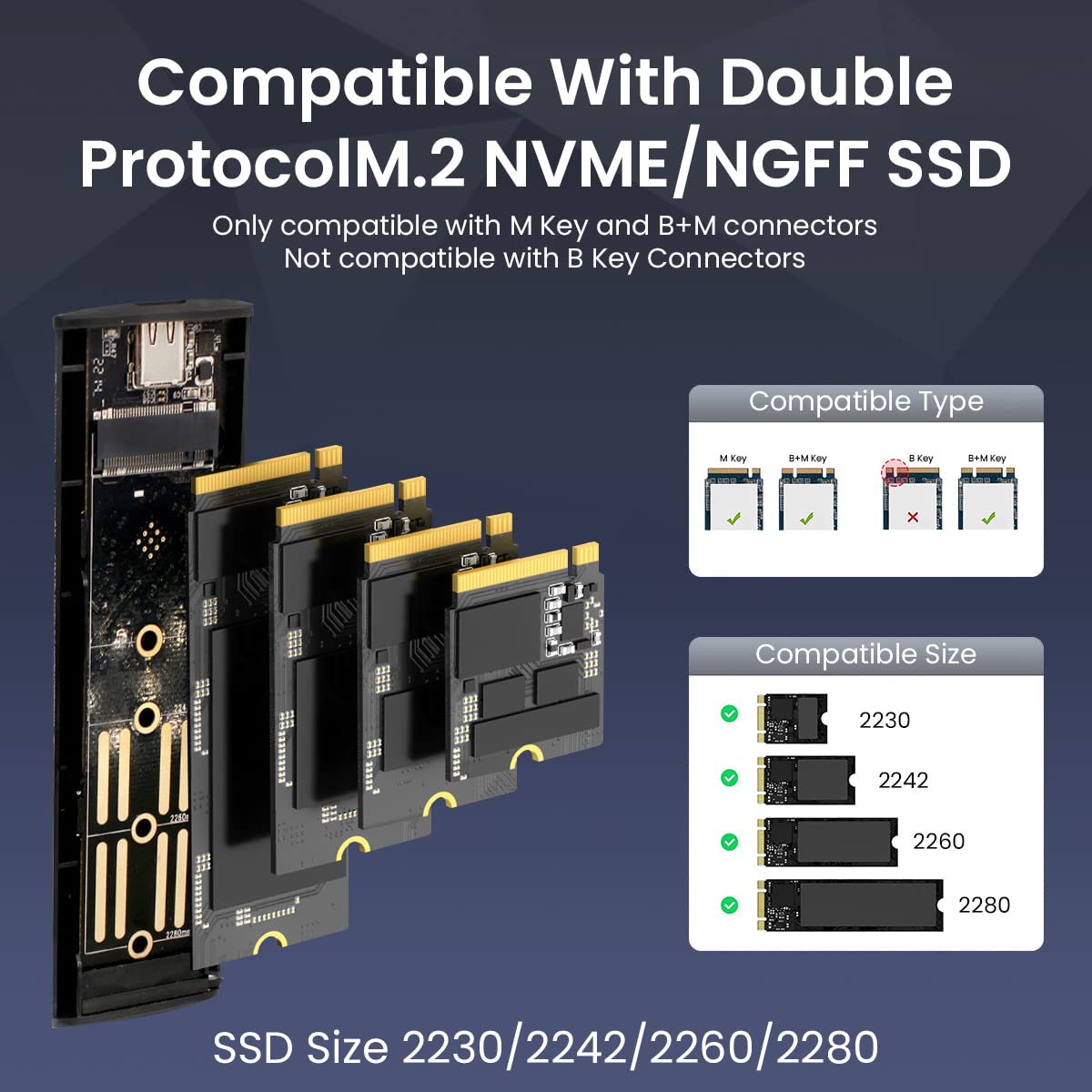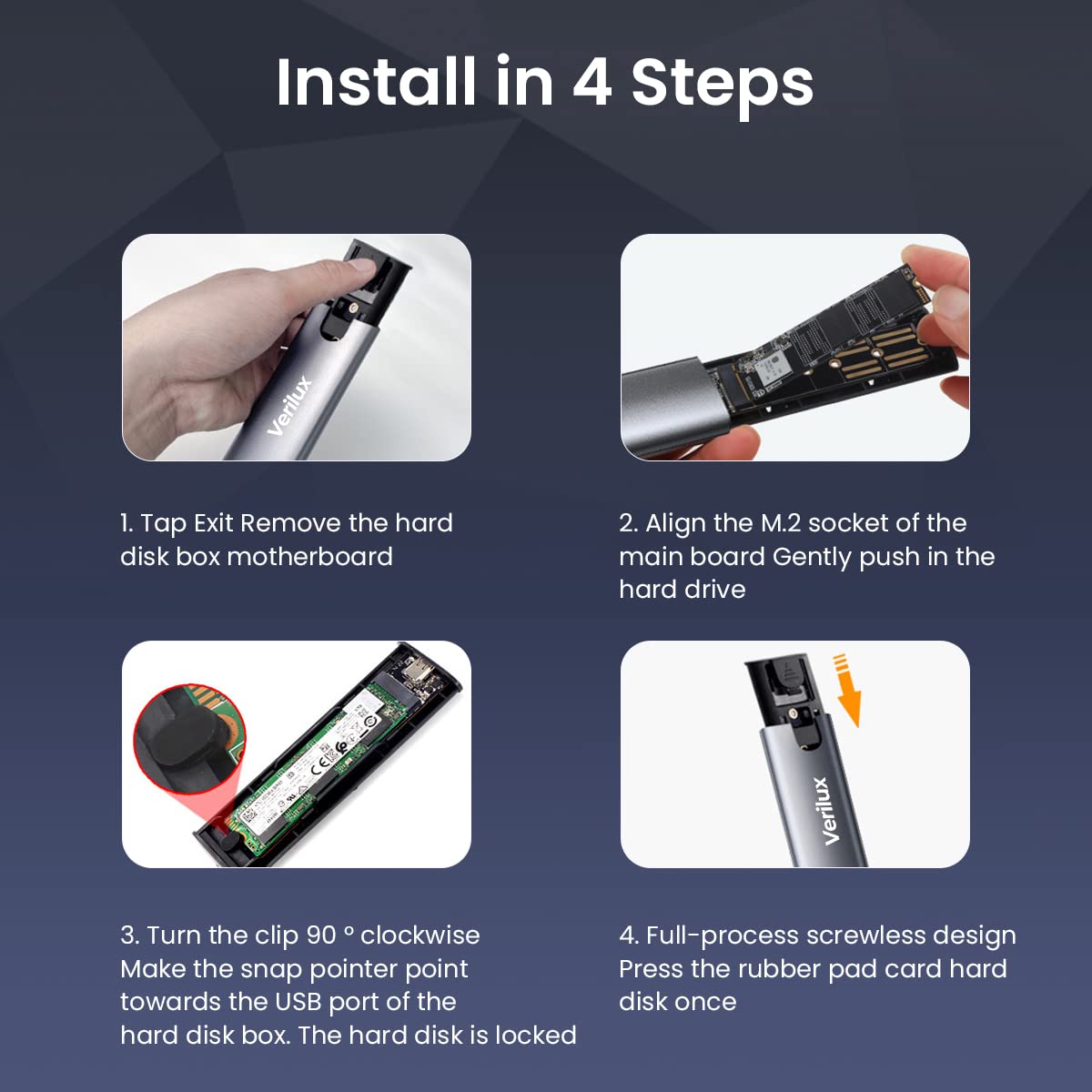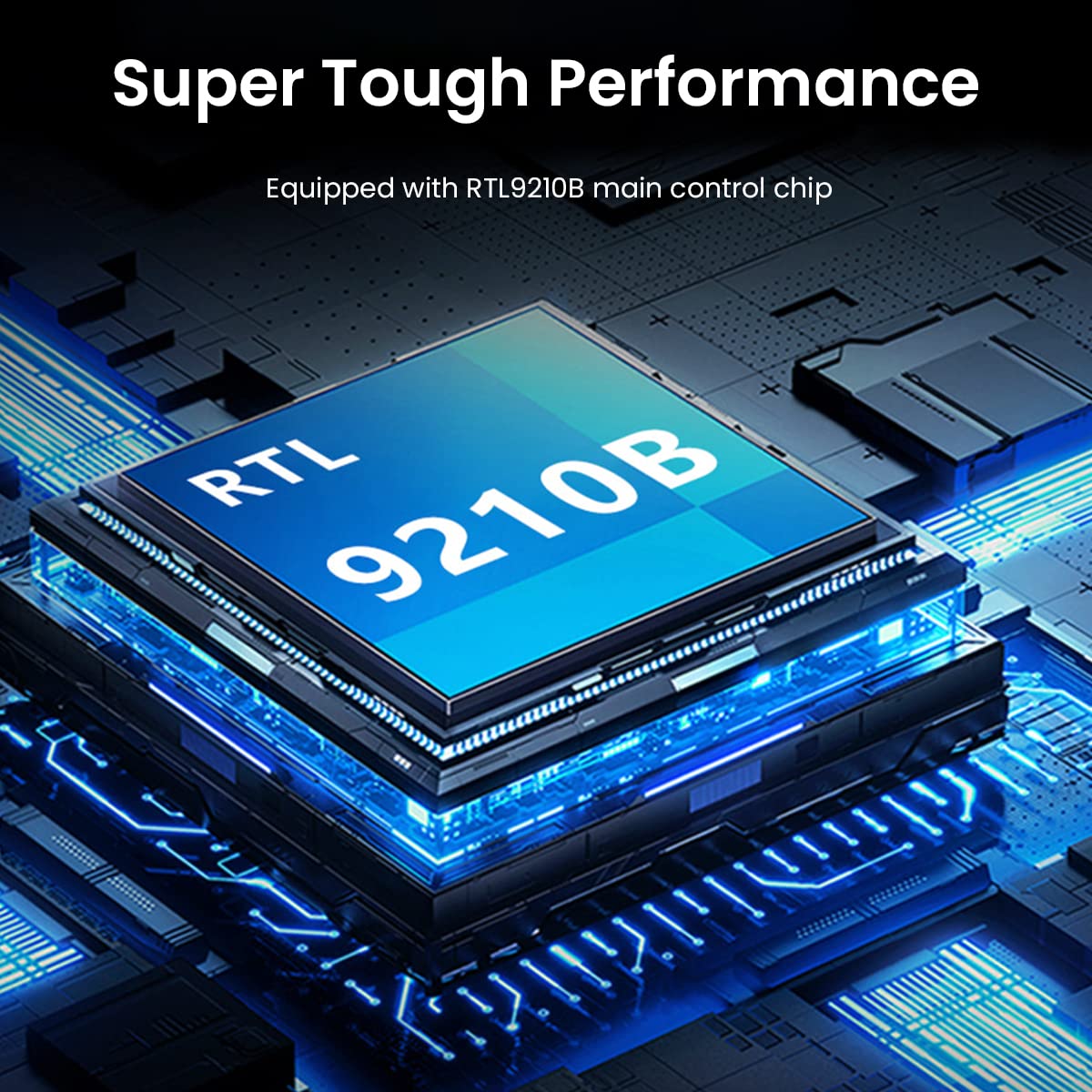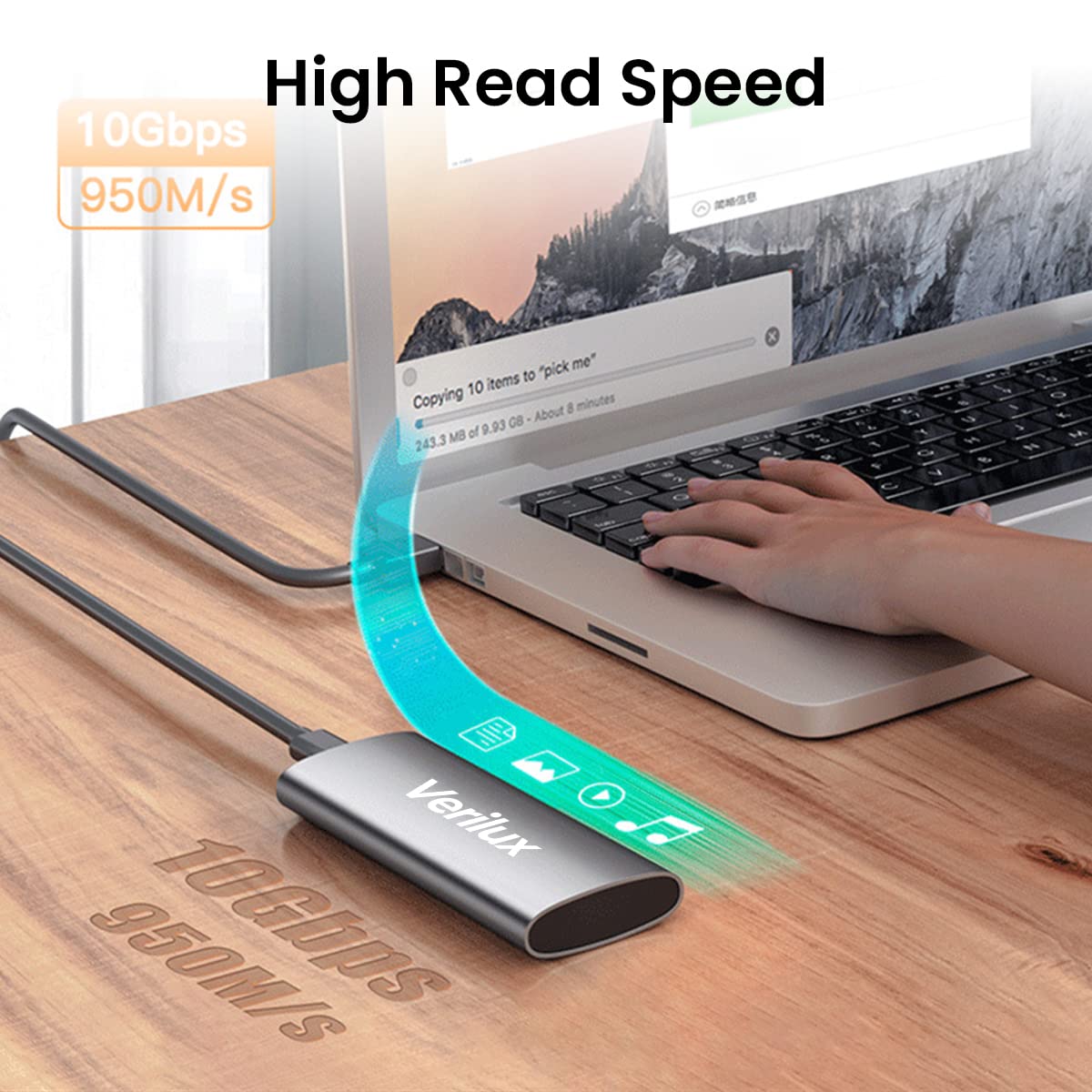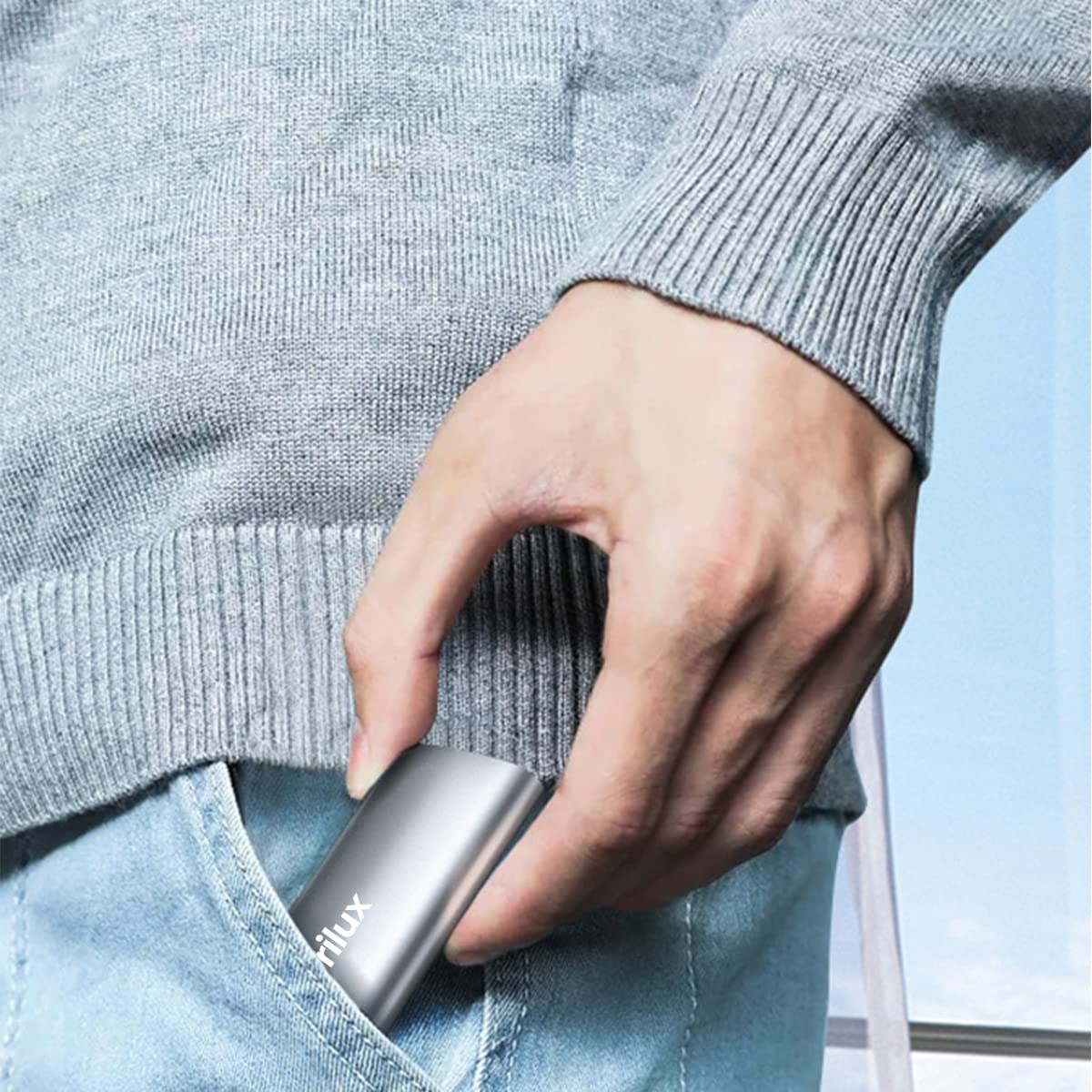
Verilux M.2 NVMe SATA SSD Enclosure SATA to USB HDD Enclosure with 2 in 1 USB Cable Tool-Free USB 3.2 Gen 2 10Gbps NVMe PCI M-Key/B+M Key, Aluminum External SSD Hard Drive Case Complies with UASP
₹ 1,800.00
Verilux M.2 NVMe SATA SSD Enclosure SATA to USB HDD Enclosure with 2 in 1 USB Cable Tool-Free USB 3.2 Gen 2 10Gbps NVMe PCI M-Key/B+M Key, Aluminum External SSD Hard Drive Case Complies with UASP
Product Description
- HIGH DATA TRANSFER SPEED: This USB-C Gen 2 10Gbps or Thunderbolt 3 are recommended for extreme speed performance. One HD movie transfer only takes 2 seconds; Backward compatible with USB 3.1 Gen 1 and USB 3.0 up to 5Gbps. Capable of performance over 1000MB/s read/write when using high performance USB 3.2 Gen2 and NVMe media, M.2 SATA USB3.1 Gen 2 is up to 6Gbps.
- BUILT IN HIGH PERFORMANCE MAIN CHIP: External hard disk case adopts high performance controller IC Chipset RTL9210B, Complies with UASP and Trim which can effectively improve the speed and extend the lifetime of SSDs. Plug-and-play compatibility with Multi OS, Windows 7/ 8/ 8.1/ 10/ Linux/ MAC. Bus powered, does not need an external power supply.
- COMPATIBILITY & EASY TO USE: Tool-Free design allows quick and easy installation of your M.2 NVME SATA SSD, easy to use and portable. M.2 NVMe SATA SSD enclosure is suitable for M.2 NVMe M Key/B+M Key and SATA B+M Key SSD. But it is not compatible with B Key SSD, M.2 PCIe AHCI SSD, M.2 PCIe devices such as WiFi and capture cards, mSATA SSDs, and non-M. External hard drive support 2230/2242/2260/2280.
- ALUMINUM ALLOY SHELL: SSD HHD enclosure adopts aluminum alloy shell, slim design, durable and excellent heat dissipation, be portable and easy to carry; Note: NVMe/SATA SSD is not included. Includes 1 x M.2 to USB NVMe SATA SSD Enclosure Reader, 1 x USB C to USB C/USB A cable
- INDICATOR DESIGN: Blue Indicator shows the data transfer status, easy and clear; SSD file system must be supported on host operating system to be accessible. (Note: For new SSD, You need to go into the disk management and initialize the SSD firstly, then it could be detected and used normally. )
Information
Manufacturer: Yiwu Kaiming Industrial Co., Ltd.
Packer:Verilux
Packer:Verilux



